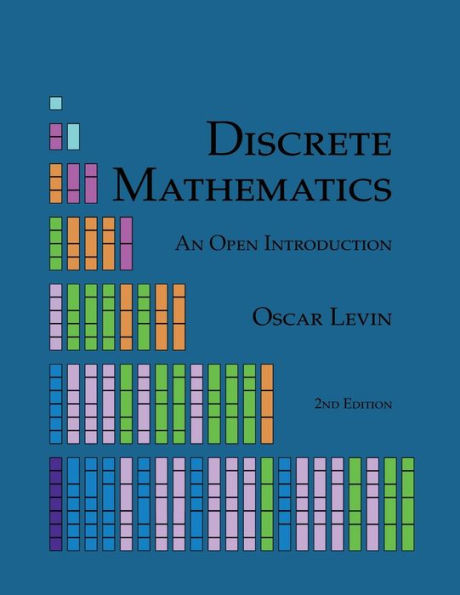This gentle introduction to discrete mathematics is written for first and second year math majors, especially those who intend to teach. The text began as a set of lecture notes for the discrete mathematics course at the University of Northern Colorado. This course serves both as an introduction to topics in discrete math and as the "introduction to proof" course for math majors. The course is usually taught with a large amount of student inquiry, and this text is written to help facilitate this.
Four main topics are covered: counting, sequences, logic, and graph theory. Along the way proofs are introduced, including proofs by contradiction, proofs by induction, and combinatorial proofs. The book contains over 360 exercises, including 230 with solutions and 130 more involved problems suitable for homework. There are also Investigate! activities throughout the text to support active, inquiry based learning.
While there are many fine discrete math textbooks available, this text has the following advantages:
- It is written to be used in an inquiry rich course.
- It is written to be used in a course for future math teachers.
- It is open source, with low cost print editions and free electronic editions.
Update: as of July 2017, this 2nd edition has been updated, correcting numerous typos and a few mathematical errors. Pagination is almost identical to the earlier printing of the 2nd edition. For a list of changes, see the book's website: http: //discretetext.oscarlevin.com
This gentle introduction to discrete mathematics is written for first and second year math majors, especially those who intend to teach. The text began as a set of lecture notes for the discrete mathematics course at the University of Northern Colorado. This course serves both as an introduction to topics in discrete math and as the "introduction to proof" course for math majors. The course is usually taught with a large amount of student inquiry, and this text is written to help facilitate this.
Four main topics are covered: counting, sequences, logic, and graph theory. Along the way proofs are introduced, including proofs by contradiction, proofs by induction, and combinatorial proofs. The book contains over 360 exercises, including 230 with solutions and 130 more involved problems suitable for homework. There are also Investigate! activities throughout the text to support active, inquiry based learning.
While there are many fine discrete math textbooks available, this text has the following advantages:
- It is written to be used in an inquiry rich course.
- It is written to be used in a course for future math teachers.
- It is open source, with low cost print editions and free electronic editions.
Update: as of July 2017, this 2nd edition has been updated, correcting numerous typos and a few mathematical errors. Pagination is almost identical to the earlier printing of the 2nd edition. For a list of changes, see the book's website: http: //discretetext.oscarlevin.com

Discrete Mathematics: An Open Introduction
246
Discrete Mathematics: An Open Introduction
246Paperback(2nd ed.)

Product Details
| ISBN-13: | 9781680921861 |
|---|---|
| Publisher: | 12th Media Services |
| Publication date: | 08/16/2016 |
| Edition description: | 2nd ed. |
| Pages: | 246 |
| Product dimensions: | 8.50(w) x 11.00(h) x 0.52(d) |
